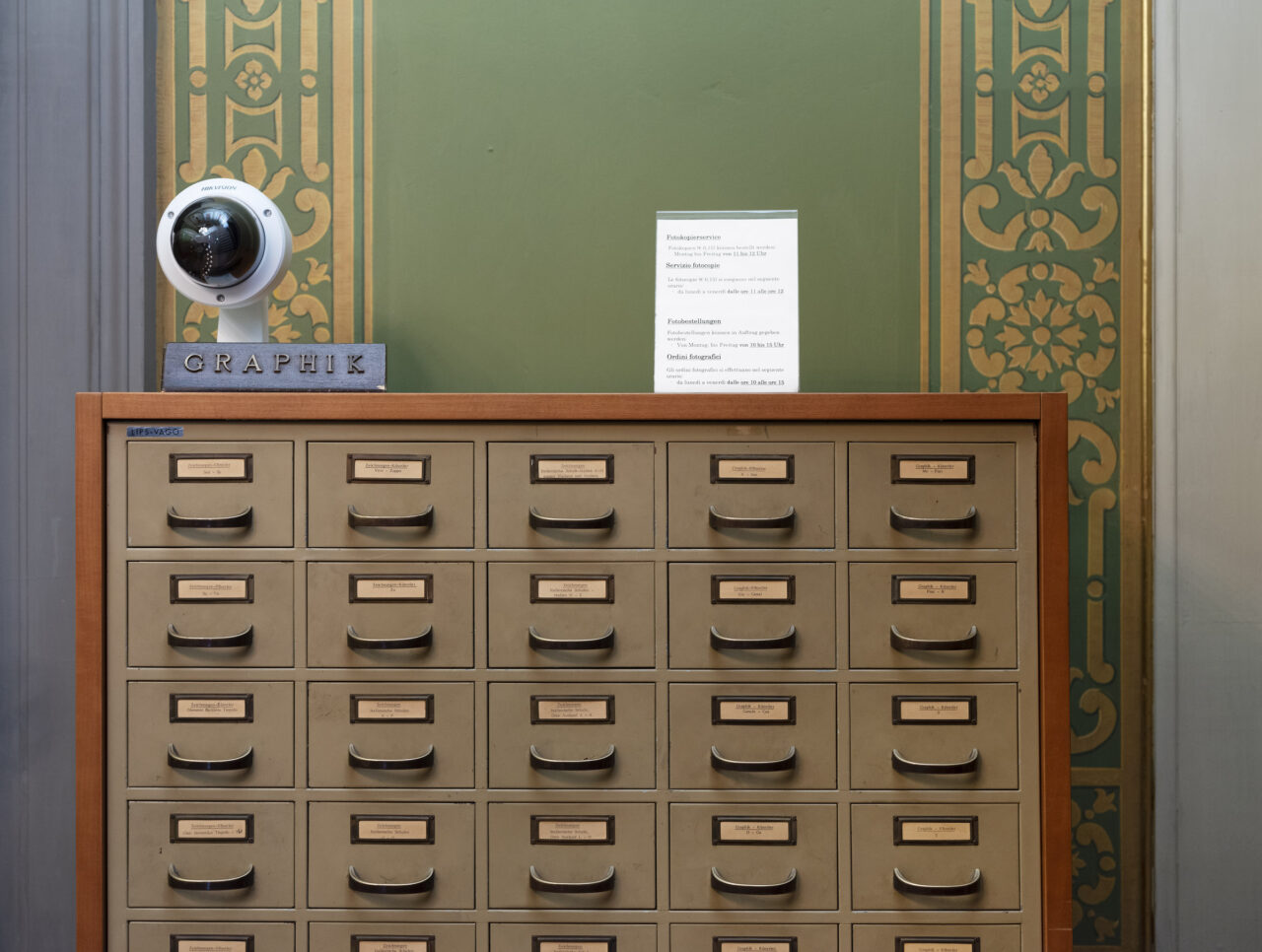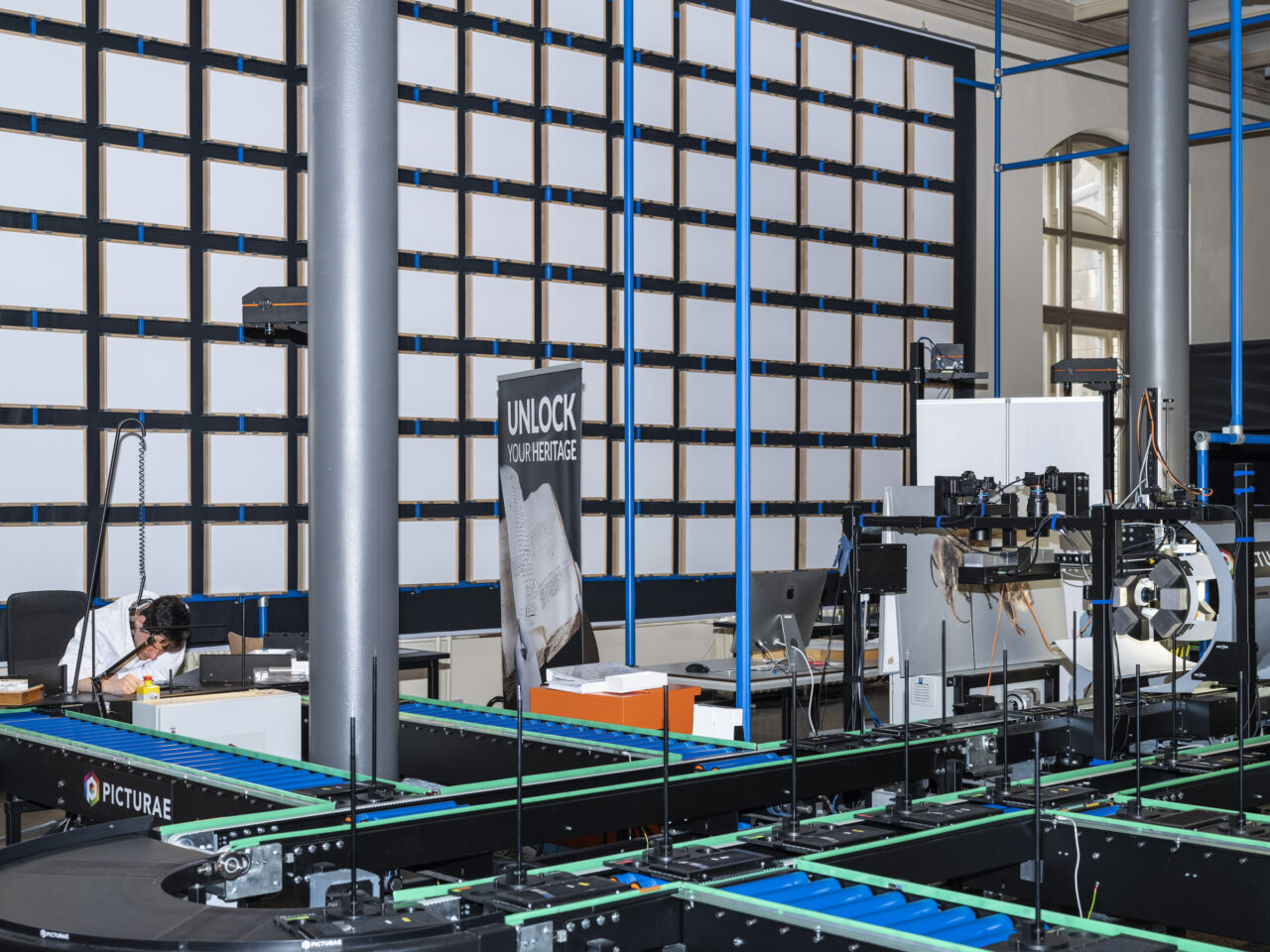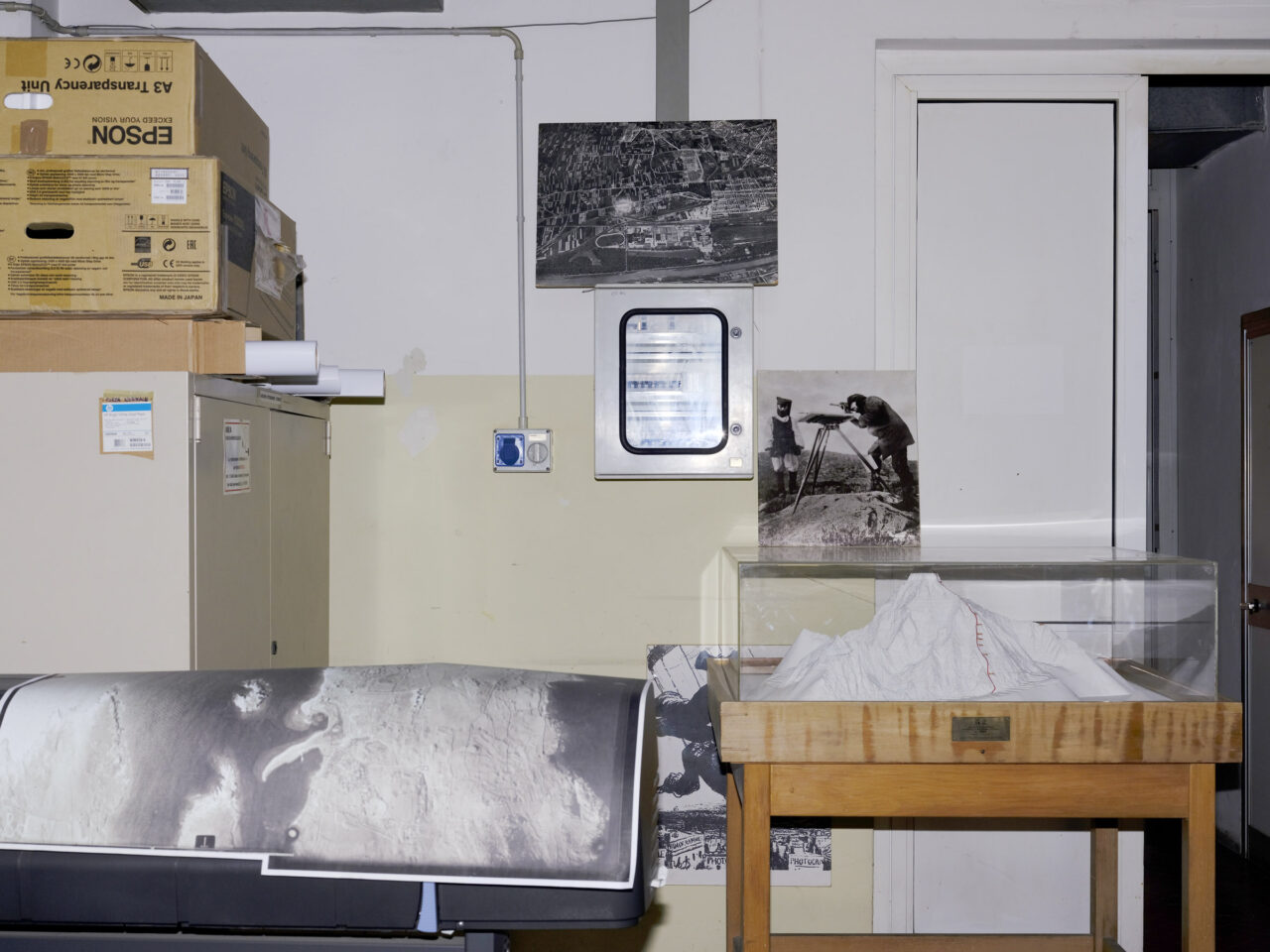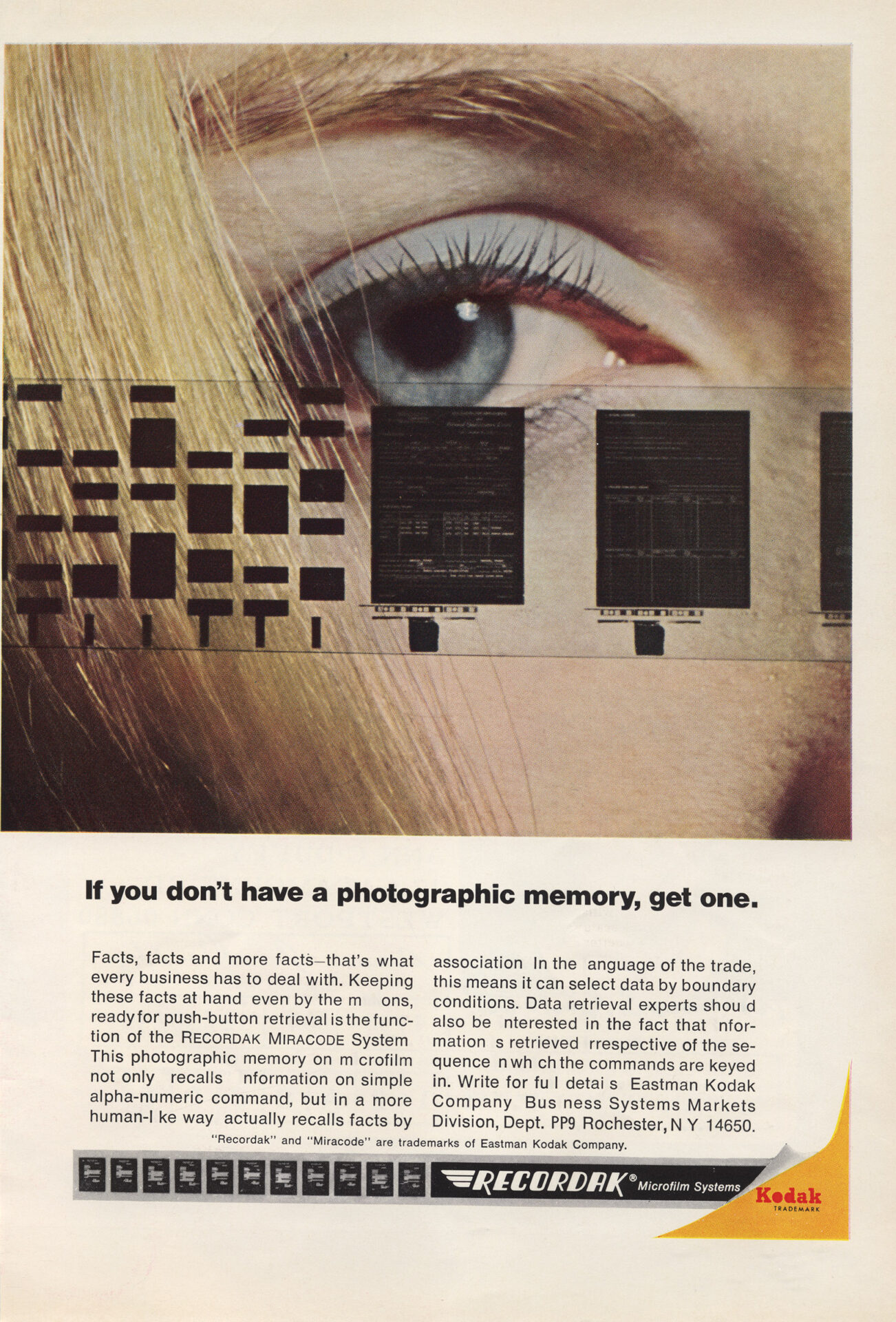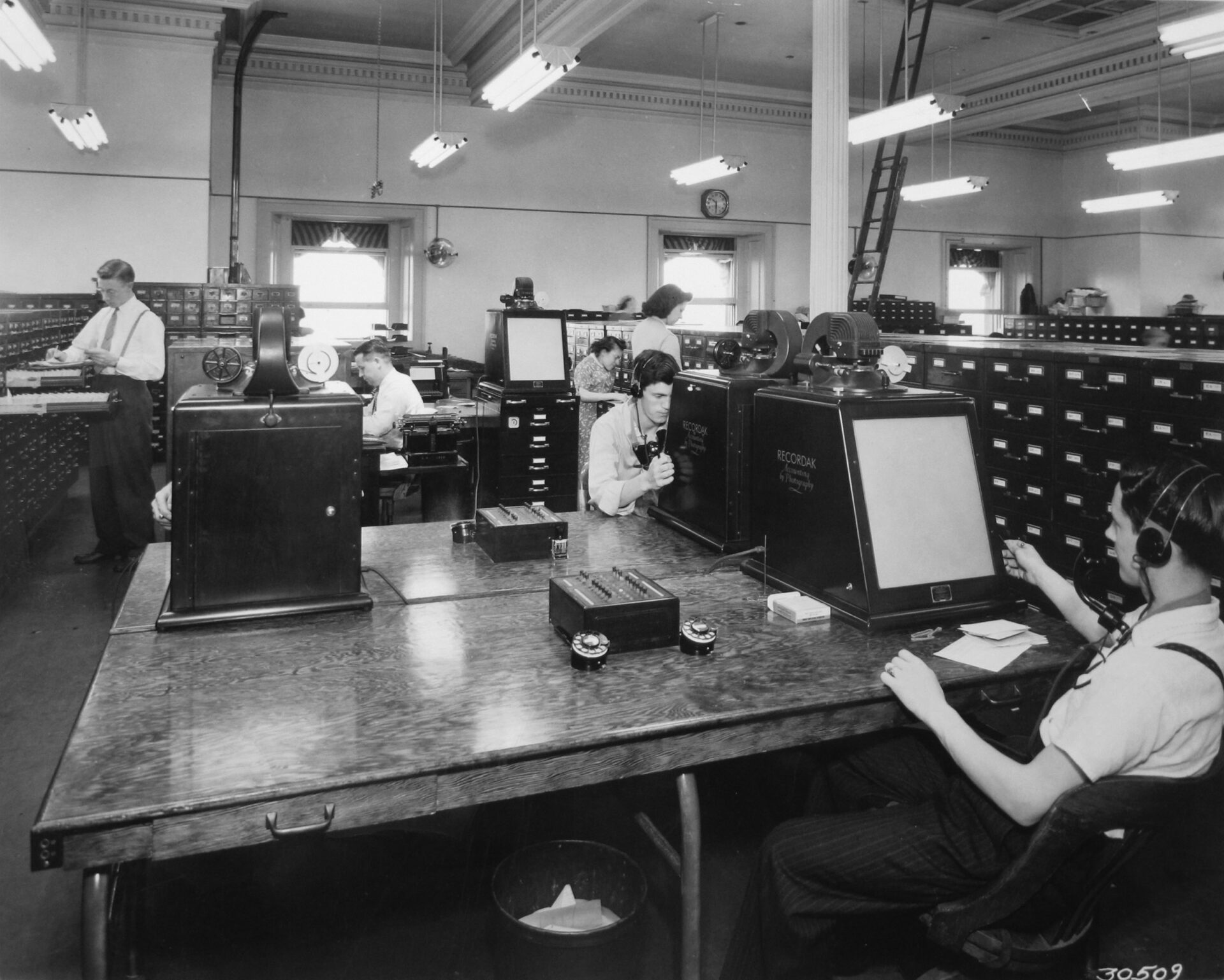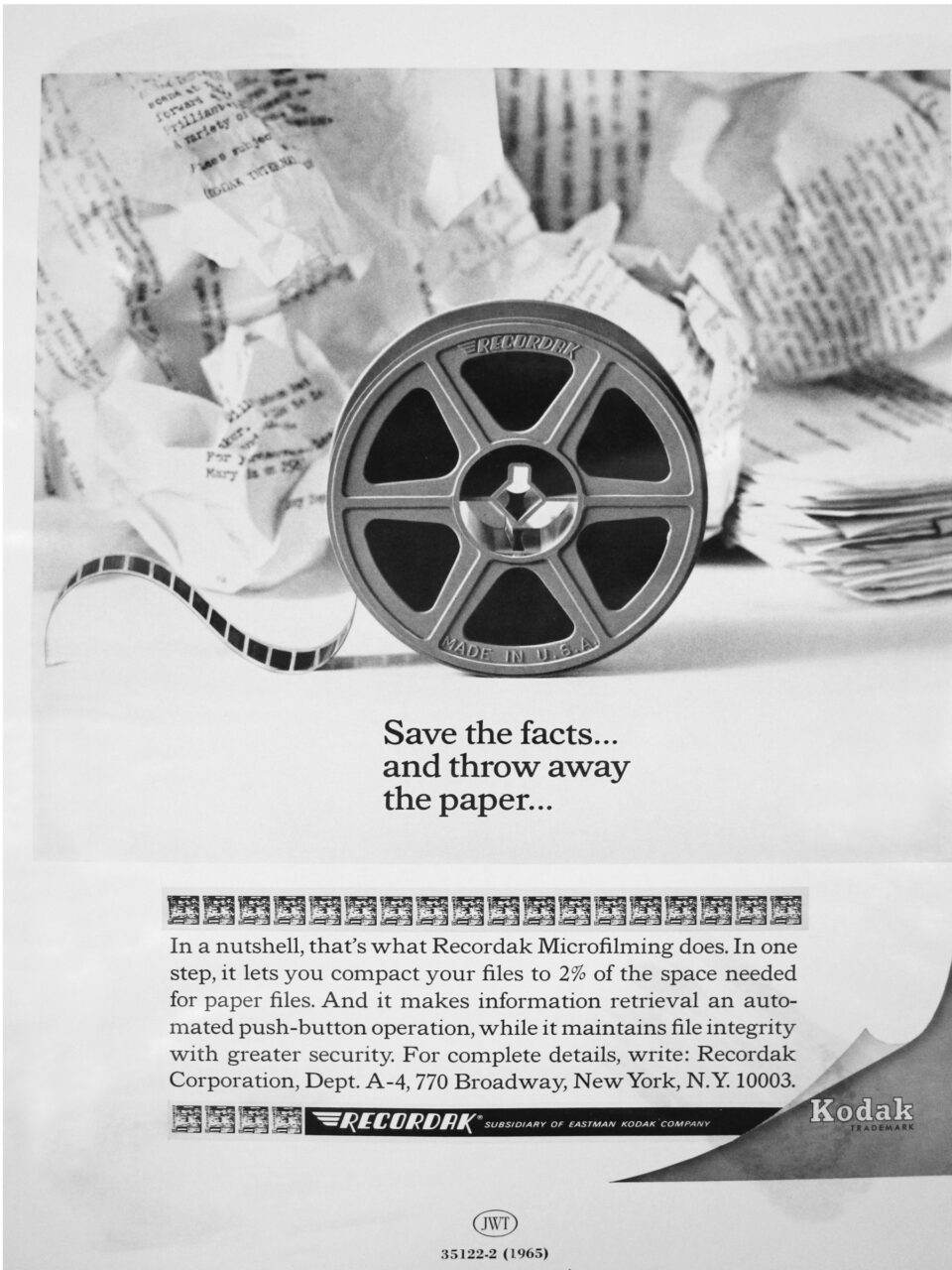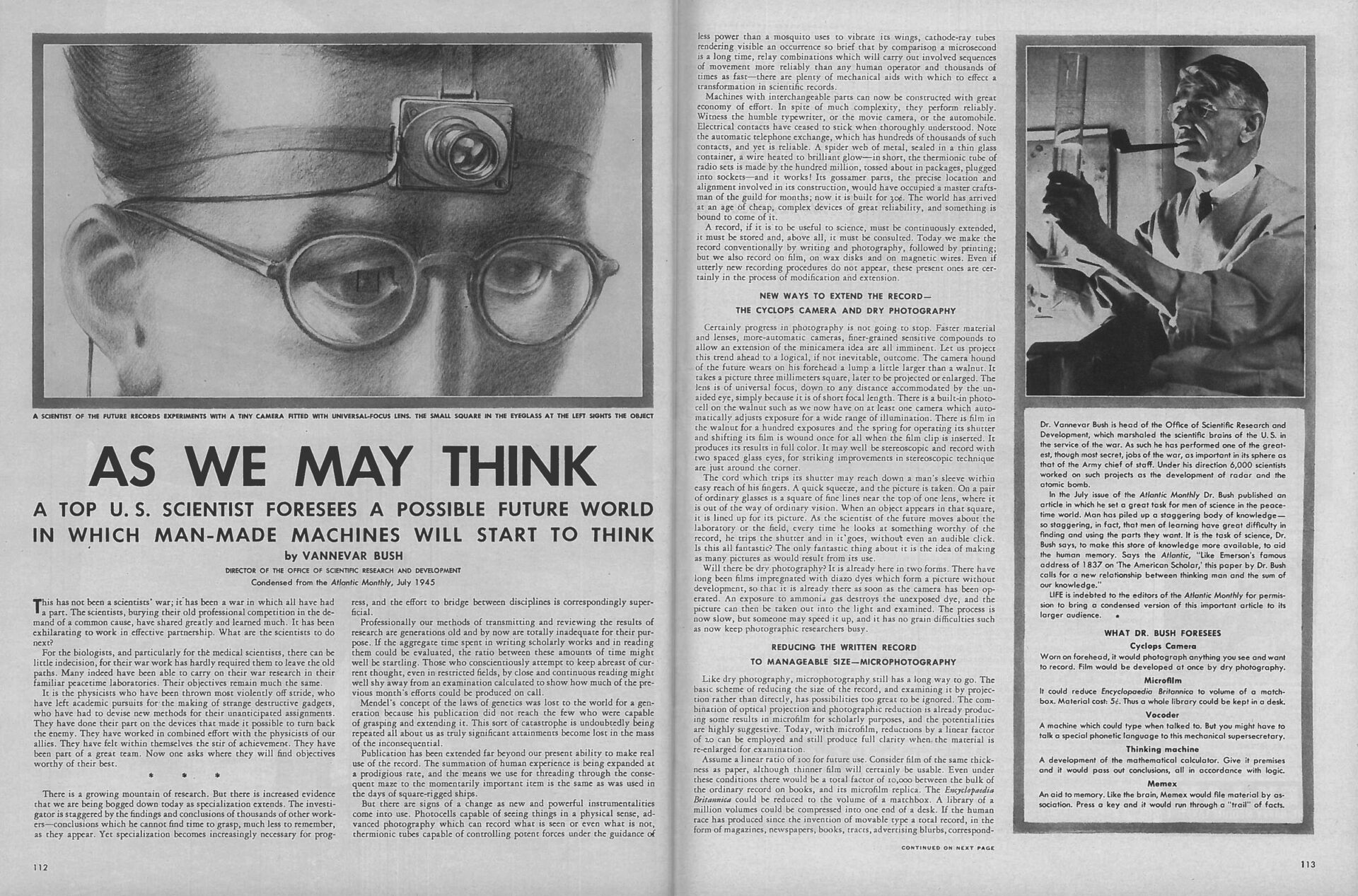Article
Promoting a Generative Museum Practice Involving Photographic Data: From Collecting to Sharing, Circulating, Activating, Training?
Nadine Isabelle Henrich
Emerging from a process of research, the artistic project ‘Image Capital’ manifests in a series of exhibitions, in which it examines the role of different photographic technologies used in industrial production and science, from the early years of industrialisation to modern-day capitalist societies. In addition to considering these areas of application in contextual terms, this essay concerns itself with another field that is becoming increasingly relevant to any study of photography as a visual currency: the social media platforms whose users take, share, store, like, organise and comment on digital photographs in unprecedented volume. The corporations running the infrastructures of the information and attention economies are continuously working on developing algorithms and ‘artificial intelligence’ – here we will use the more appropriate term ‘synthetic cognition’ – in a bid to capitalise on data collected about different types of images and the patterns of behaviour and reactions displayed by users when dealing with digital images.[1] The text also examines the prevailing practices in photography museums, delineating the areas of tension and creative potential that now inform the image databases in public art institutions and straddle the ecosystem of digital image culture on the web. It addresses the dynamic entanglements online, which interweave the sphere of museum collections with global platform capitalism and the growing influence of programmed co-actors such as synthetic cognition.
Formats spanning the presentation of digital collections and social media platforms
Public museums and art institutions whose collections of photographs, photographic estates and archives have been growing for over a century have at their disposal, in today’s attention economies, images that are an asset in digital form – both qualitatively and quantitatively speaking – with cultural, social, scientific and economic potential that has been radically underestimated. Since the 1990s, these institutions have been busy digitising their collections. In the process, photographic collections are making public their material, which may be born-analogue (digital copies of analogue originals) or born-digital (image files that exist only in digital form), entering both these types into the templates of museum databases together with metadata as a means of classification. Photographs are tagged in this process by museum staff or external service providers, given descriptive titles, classified and made searchable both internally, on the basis of these different renderings into text, and on the Internet when they are published online. This gives rise to a fundamentally new relationship connecting the photographic with the text-based metadata that structure its visibility or lack thereof.
Photographic data is organised and made searchable or invisible in online searches at the initiative of different actors with specific economic and political interests. In this regard, the egalitarian idea that the visibility of digital data collections is predicated on impartial criteria, as claimed by Lev Manovich in 2001, turns out to be a utopian one: ‘Many new media objects do not tell stories.… Instead, they are collections of individual items, with every item possessing the same significance as any other.’[2] Automated search processes based on text input – which are now the threshold of photographic visibility – point to a complex relationship between photographic data and language, in which the methods used in the real exercise of power in all its different forms are linked to the orders of photographic visibility.[3] Search spans a transmedial bridge from search text to image data. In this context, the coded architecture of current search technologies is essentially built on a relationship between language and image that redefines the topos of the indexicality of photographic images. Having shifted away from a chemical, light-based index, the visibility of photographic images is now reliant on online indexes. The visibility and relevance of a photograph today are influenced by the searchability of terms in the index of vast databases. Without this anchoring, images are not searchable and thus fade into invisibility. As the semantics of digitised archives and collections may feed into pattern-learning algorithms, trained with text-image pairs, the methods and vocabulary employed to describe and classify photographic data are increasingly relevant beyond the institutional sphere. Thus, the processes of translating photography into text turn the discourses of the ongoing revision of terminologies relating to racism, sexism, classism and ableism into a key element to be considered in the collecting, navigating and curating of photographic data.
The knitting together of digital (in)visibility and current sociopolitical discourses illustrates the necessity for public museums to be proactive in critically reflecting on the responsibility they have in how they deal with their databases. The digital availability of their collections, which are to some extent licence-free, means that museums are increasingly becoming public image platforms. They are also active users of social media who manage institutional profiles to reach global target groups and younger audiences in particular. This new interface between museums and tech companies is often still informed by an asymmetrical relationship that museums give too little thought to and, most importantly, is not lucrative.[4] Museums and their images generate clicks and attention online, while remaining nothing more than platform ‘users’ and ‘clients’. This absence of agency, let alone any clear position on the question of how to actively shape and create platforms for art audiences beyond Instagram and TikTok and whether to make cultural data openly available, finds a counterpoint in initiatives like RijksStudio or Open GLAM. Open GLAM’s programme involves making all image data – including metadata – available online, very much in keeping with a culture of digital sharing. The initiative, which has been bringing together galleries, libraries, archives and museums since 2013, is committed to the motto: ‘Everyone should be able to access and reuse cultural heritage in the public domain.’[5] Their objective is both salient and complex: for example, it is almost impossible any more to make a clear separation between commercial and non-commercial usage owing to the capitalisation of attention in the digital realm. Nevertheless, the Open GLAM network is an important discursive space for exploring the role of public collections in digital culture and understanding how they see themselves today.
The value of the physical image objects in museum collections can thus be set against their digital value: photographic data functions as an alternative currency in Web 2.0 and upcoming 3.0, on platforms and social media and in everyday acts of photo-based communication. The new economic processes of digital companies are still a long way away from the business model of image databases and collections presented online by public institutions and have little in common with their understanding of themselves. The image data of the Deutsche Fotothek, for example, which includes 2,230,000 images from 95 institutions, are not visible in Google searches because, unlike Getty Images, for example, the picture library does not have an open interface and as a result the images are only accessible to people with prior knowledge of the database – which means that they remain hidden from most online users.
Instead of seeing themselves as a repository, a centre of competence and a platform of digital imagery – and thus as an important source of visual material for social communication and cultural mass production today – the majority of public institutions persist with an agenda of physical collecting. In many instances, questions of copyright and the challenges posed by collecting and exhibiting digital images and artistic works, which may consist, for example, of an Instagram profile, remain unresolved. Yet the traditional role of the museum as a detached observer and selective collector might be scrutinised at a fundamental level: in today’s image-based practices, the museum would be in a position to revolutionise its area of responsibility by virtue of its wealth of digital image resources, shifting from being a collecting depot to an energising wellspring of cultural practice.
From a place of reception to a place of photographic production and distribution
The configuration of content and the social dynamics of the museum space have been permanently transformed by visitors’ smartphones: the physical exhibition display in the museum constitutes a stage for a camera-wielding, networked public engaged in an online dialogue and connected with digital platforms where images are shared, liked and commented on. As they tour an exhibition, visitors individually augment the curators’ selection by googling other works by the artists on display, calling up their Instagram profiles or searching for definitions of terms. Now that smartphones with integrated camera functions are ubiquitous, photographs taken in the exhibition space are typically shared online in real time from inside the museum, transforming it from a place of reception to a place of photographic production and distribution. In the museum, this brings the viewing of images full circle as the viewers respond to what they see by producing new images. Photography here is a gesture of interacting, of obtaining access and of documenting one’s own presence in the institutional space and is thus a digital extension of the physical exhibition.
These shots taken during the museum visit are put into global circulation, along with photographs and videos from the digitised collections. Depending on the number of followers they have, individual visitors may have more reach than the physical exhibition or the institution’s social media profile. Outside social platforms, the images appear in search results or mutate into, among other things, memes supplemented by text. This has given rise to a networked, polyphonic process, a digital entity with a life of its own that wrests itself from the institution’s control. In this process, the exhibitions in public institutions interact directly with the mechanisms of today’s attention economies and the logics of perspectives mediated by visitors who are connected online, usually without this being actively incorporated in the curatorial concept. Yet a new field of hybrid co-curation is being generated here, giving a new kind of structure to museum practice, one that is open and ‘participatory’ in terms of process. The curating of photography is a particular case in point, with this dynamisation not yet reflected on as an element of curatorial practice and road-tested in exhibitions as an active concept.
The Rijksmuseum in Amsterdam made an initial move in this direction when it launched its collection platform RijksStudio, which went online back in 2014.[6] Like Tumblr or Instagram, it not only allows access to digital photos of 761,979 collection objects in every kind of media but also offers various functions for users who set up their own RijksStudio profile such as the option of creating their own albums in which images can be selected, arranged and supplied with descriptions. Users can also react to other people’s albums with likes – an indication of how social media functions have been adopted here. Image files can also be downloaded free of charge as JPEGs, at a resolution of 4,500 × 4,500 pixels, while prints up to poster size can be ordered for a fee. A particular plus is the increased visibility of the most recent or most liked albums created by other users, as they offer new ways of approaching the collection that operate in parallel to the work of the museum curators and in turn inspire other users and, just as importantly, the institution itself.
There is, however, significant scope for expansion in terms of how users interact with image databases and the online collection, which in the Rijksmuseum’s case might involve setting up a personal profile, creating individual sets of images and organising them in a particular way, or purchasing works as economic products in the form of prints. Digital residencies – in which different actors are invited to take a collaborative and transdisciplinary approach to working with image banks and to give digital image data a new legibility by applying ‘knowledge design’ in close cooperation with universities[7] – or the training of algorithms to develop their own actors creating digital regimes and to produce new synthetic images based on the museum’s own image databases using synthetic cognition and generative adversarial networks (GANs): these are just some examples of ideas to suggest the latent potential, be it artistic, scientific, social or economic, contained in the image data of public institutions.[8]
Algorithmic image regimes, collaboration and co-curation
The hybrid work processes used in contemporary cultural production in digital photography, film, design, architecture, immersive media and artistic practice are characterised by the cooperation of humans and synthetic cognition. This kind of cooperation will become more widespread as synthetic neural networks become increasingly available and accelerate the learning process. Professionals in all creative disciplines are making more and more use of platforms like Midjourney and DALL·E, which generate synthetic images on the basis of information input, e.g. in text form, and give visual expression to the user’s imagination.[9] Midjourney’s ‘image generation’ and ‘chat services’ share the image results with other users and use chats to create the possibility of mutual exchange so that they are at once an image tool and a social platform. Although these synthetic image machines are still free of charge after registration to enable synthetic cognition to be further developed with the help of as many users as possible, they are increasingly becoming subscription-based services. The photorealistic image results, which can be individually generated using text as a basis, in turn create capital value in the attention economy.
The fact that the image databases of public institutions are not included in the freely accessible online datasets that can be directly searched has consequences in practice: not only does it impede the global, networked visibility of the collections, it also prevents the cultural property from being part of the digital visual ecosystems. The cultural heritage of museums is thus often excluded from the process of training algorithms and synthetic cognition. What does it mean for the present and future of museums, for visual culture and, above all, for society if the image databases and stores of knowledge in public institutions are not incorporated in the training of algorithms? One scenario might involve the hypercommercialisation and standardisation of the aesthetics of digital imagery, which iteratively feed on their own commercially motivated patterns and reproduce them synthetically on an ongoing basis.
When the ‘photorealistic representation of a thirty-year-old woman’ is being prompted on Midjourney, the images generated often have the characteristic features of a classic Instagram aesthetic: slim bodies, broad, styled eyebrows, white skin and facial features that are considered attractive in normative terms. This can be traced back to the biases of the data sets that are used to train the synthetic cognition and whose statistical features it emulates, which raises questions about the relationship between photography collections in museums and this globally networked and generative image practice. How can museums, as an image source that could contribute diversity and thus act as a potential counterbalance, actively respond to these commercial and normative dynamics?[10]
The need to challenge biased algorithmic systems and their use in curatorial practice and museum work manifested in 2020 with the research project ‘Training the Archive’, a cooperation between RWTH Aachen, the Hartware MedienKunstVerein and the Aachen Ludwig Forum. Francis Hunger, artist and media theorist, emphasises the challenge of training neural networks with the broadest possible spectrum of image and metadata and consciously reflecting on the ‘inclusions and exclusions’ in the ‘information models’ that this process creates.[11] Algorithms can only be used responsibly for curatorial practice if the approach is both transparent and critical, as the tools themselves shape ideation. But this inward reflection, i.e. the potential for their considered use for museum practice, must in turn be outwardly mirrored and the museum’s own image databases fed into the public digital dynamic in order to properly fulfil the social remit of public collections.
Accumulation, circulation and transformation
‘The spectacle is capital extended to such an accumulation that it becomes a substitute for reality itself [i.e. an image].’[12] First published in 1967, Guy Debord’s The Society of the Spectacle linked social phenomena like class alienation and cultural homogenisation to the critique of economic and technical systems such as capitalism and mass media, which, according to Debord, replace real experience with the consumption-oriented propagation of visual representations of the real. Today, the accumulation of photographs, a practice that was traditionally a hallmark of museums and archives, has shifted from physical rooms under state control to the data centres of digital companies operating on a global scale, which regulate the consumption-oriented circulation of images, managing the attention economy. Keeping the idea of ‘Image Capital’ in mind, we might reverse Debord’s line of enquiry and ask: What level of accumulation is required to turn images into capital? Here we will take Instagram – which is part of the technology company Meta Platforms, Inc. – as a point of reference since the social media platform, which is primarily used as a means to circulate photos, is still a hub of digital interactions for the art world today.
Users of social media view imagery whose content they do not determine on their own, as it is selected and systematically organised based on ‘relevance’, as stipulated by criteria that remain opaque. The personalised feed curated by Instagram’s algorithms thus also affects the reach of shared content. This has turned social media companies into new actors in the gatekeeping of visibility and the construction of value in our dealings with photographs. The creation of the canon, an instrument for exercising power through the process of including or excluding images in the realm of the relevant – and thus in the valuation of seeing, preserving, exhibiting and collecting – is no longer primarily negotiated in art by institutions and their discourses. The active use of social media platforms as a research tool means that the canon of contemporary art is also shaped online by factors such as the number of followers an artist has and the number of likes their profile receives, and, just as importantly, by the interaction with algorithmic ways of organising content, which are inherently based on economic motives.
Instagram’s algorithms are constantly learning as they analyse image information, metadata and user patterns. This makes it possible, for example, for common characteristics in photographs to be identified that generate attention, along with the types of images that are suitable for specific target groups; it also correlates the viewing of certain kinds of photographs with the urge to make online purchases. In 2016 the platform began ordering the posts in people’s individual feeds according to an understanding of ‘relevance’ that was defined by Instagram and lacked transparency. In a bid to optimise user behaviour, algorithms might prioritise photographs that show the faces and unclothed bodies of women, as these generate more interaction.[13] The wealth of data on popular image types and user behaviours gives the platform an appeal for advertisers that is second to none. However, the annual advertising revenue, estimated at US$40 billion for 2023, represents only a fraction of the fund of Big Data that Instagram, the most popular social media platform for digital photography, has accumulated since the launch of its first Android version in 2012.[14]
The period of use, the number of interactions and, of course, the publication of users’ personal content are key parameters determining the success of any platform. Developing and providing a range of tools for taking, editing, organising, linking and collecting digital photographs is thus a central plank in Instagram’s efforts to optimise user activity and output. Back in 2009 Lev Manovich made the observation, however, that most individual user-created content on Web 2.0 does not, strictly speaking, constitute autonomous material; rather, in many cases the use of templates, filters and editing tools simply generates variances, iterations and versions of popular image types: ‘These subcultures themselves rarely develop completely from scratch; rather, they are the result of the cultural appropriation and/or remix of earlier commercial culture.’[15] This observation chimes with the popularity of memes and GIF culture, in which online image files or videos are combined with text to create a new, often ironic message. In this way, digital culture ‘recycles’ or ‘samples’ images, texts and media available online, recontextualising them and putting them back into circulation. These are key practices in the network society, which Manuel Castells describes as a ‘culture of sharing’: ‘In our society, the protocols of communication are not based on the sharing of culture, but on the culture of sharing.’[16]
Navigating digital systems: networked co-curation
The platform algorithms operate as commercially motivated, non-human curators and entities in the ‘digital milieu’ that simultaneously organise and learn outside the users’ zone of visibility and influence.[17] The algorithmically ordered search results and the individual feed on Instagram and other platforms follow ‘nebulous concepts’ like ‘new or popular’.[18] They remain opaque. In 2019 Annett Dekker and Gaia Tedone coined the term ‘networked co-curation’, which aptly describes the current dynamics of digital image and knowledge production.[19] Nowadays curators no longer work in a hermetic museum, where the institutional canon is refined and updated; instead, they are involved in a networked structure in which human and non-human actors collaborate on image collections, constellations and interpretations.[20] ‘Curation on the Web is not merely concerned with presenting art, but […] functions within a wider ecology of social and technical power relations. This shift is characterized by a collision of different interests driven by economic, cultural, and socio-political agendas.’[21] Here, actors in the art and museum scene are themselves directly engaged with the dynamics, trends and logics of the attention economy. Instagram has developed into a key platform for ‘discovering’ young positions, as can be seen, for example, in the visual collages of @nemiepeba, the trained social worker Frida Orupabo from Norway. It was on Instagram that American artist Arthur Jafa became aware of her photographic collages and got in touch with her to invite her to take part in an exhibition at London’s Serpentine Gallery. Her complex, human-sized collages of visual material drawn from the digital realm have now entered the museum space, represented in numerous exhibitions and major collections.
From collecting to circulating, generating and training
Given the crisis in our material culture, its failed logics of physical accumulation and the resulting consumption of finite resources, we may ask what sustainable collecting and museum work will look like in the long term.[22] Based, for example, on Switzerland’s museum landscape, experts estimate that up to 90 per cent of the works in museum storage are rarely or never exhibited; the situation, in Germany, is likely to be more or less the same. This begs the question of whether collecting activity as a practice of continuous expansion is tenable now and in the future. There is no space here to broach the complex discussion about ‘de-collecting’ public museums. However, this debate is of critical importance here insofar as making photographic data freely available in digital form can provide the mass of images in storage with visibility and transparency, activating and engaging them in the processes of digital image cultures, research and artistic practice and rendering them profitable without having any serious effect on the physical infrastructures with all their inertia and complexity.
The hybrid, generative institution, imagined as a globally accessible presence with parallel circulation and wide-ranging activity online, can create cultural and economic value, to the extent that art museums see themselves as platforms of visual culture, managing today’s main resource – digital image data – online in a way that is both visible and searchable, activating it culturally and economically and allowing it to develop its own forms of ‘intelligence’. Algorithms and synthetic cognition regulate and mould the behaviour of actors in digital space. By training them on photographic data sets and the actual and potential patterns that can be read from them, the image capital of public museums has taken on a new kind of cultural, social and economic relevance that needs to be consciously and actively constructed. Our recognition of the complex ways in which algorithms influence digital visibility and the far-reaching impact of this on cultural reception and production suggests that the time has come for museum collections to deploy their significant image databases to become a locus for the critical training and development of software, algorithms and synthetic cognition, commensurate with their social function. As a digitised element in the ecosystem of digital culture, the analogue collection takes on a generative dimension, which can be actively patterned in museum practice by understanding public collections as visual stores of today’s image capital and transforming them into a reflective, humanistic and artistic site of development for non-human producers of the image.
[1] The term synthetic cognition ‘amplifies non-human methods of cognition and anticipates modes of symbiosis between imposed dichotomies’. On this, see Ilan Manouach and Anna Engelhardt (eds.), Chimeras: Inventory of Synthetic Cognition, Athens: Onassis Foundation (2022), p. 9.
[2] Lev Manovich, The Language of New Media, Cambridge: Massachusetts Institute of Technology (2001), p. 218
[3] The exhibition and case study ‘Poetics of Search’ explores the semantics of search-based visibility in the field of photographic databases and museum collections. See https://www.fotomuseum.ch/en/case-study-poetics-of-search/.
[4] The expression ‘not lucrative’ is used here as an allusion to the economic potential of algorithms and synthetic cognition, which could be trained on digitised cultural assets, for example, and used to generate synthetic visual values that in turn create new cultural and economic values.
[5] See ‘Towards a Declaration on Open Access for Cultural Heritage’, Open GLAM, https://openglam.pubpub.org/ (accessed 17 July 2022).
[6] See ‘Rijks Studio’, https://www.rijksmuseum.nl/en/rijksstudio (accessed 17 July 2022).
[7] Jeffrey Schnapp coined the term ‘knowledge design’ to indicate the tremendous relevance of visual data literacy and to enable him to reflect on these practices and its forms as a cultural and critical technology. See Jeffrey Schnapp, ‘Knowledge Design: Incubating New Knowledge Forms/Genres/Spaces in the Laboratory of the Digital Humanities’, Keynote delivered at the Herrenhausen Conference ‘(Digital) Humanities Revisited – Challenges and Opportunities in the Digital Age’, http://jeffreyschnapp.com/wp-content/uploads/2011/06/HH_lectures_Schnapp_01.pdf (accessed 7 April 2023).
[8] A generative adversarial network (GAN) is a class of machine-learning technology developed in 2014 that uses a training set to generate new data with the same statistical characteristics as the training set. For example, a GAN trained on photographic data can generate new digital images that, in the perception of human viewers, have authentic photographic qualities, at least at a superficial level.
[9] Midjourney is run by David Holz and sees itself as ‘an independent research lab exploring new mediums of thought and expanding the imaginative powers of the human species.’ ‘About’, Midjourney, https://www.midjourney.com/home (accessed 17 July 2022). On DALL·E, see ‘DALL·E: Creating images from text’, https://openai.com/blog/dall-e/ (accessed 17 July 2022).
[10] Photography collections in museums inevitably manifest the history of value systems and power structures from the mid-1800s to today and therefore contain their own biases. Though these parameters and patterns differ from the commercial aesthetics of social platforms, they add a variety of image types, human representation and photographic practices.
[11] It is significant that in creating this spectrum ‘Training the Archive’ does not rely on the databases of German museums but instead uses data from the collection at the Statens Museum in Copenhagen, which, as open source, is very well tagged. See also ‘Seeing through Clouds: Ein Gespräch mit Francis Hunger und Nelly Y. Pinkrah’, in: ‘Zukunftsressource Archiv: Kunst als Medium von Erinnerung und Imagination’, Kunstforum International 280 (2022), pp. 44–53, here: p. 49.
[12] Guy Debord, The Society of the Spectacle, ed. Ron. Adams, Cambridge, MA: Unredacted Word (2021), p. 31, https://unredacted-word.pub/spectacle/. Originally published as La societé du spectacle, Paris: Buchet-Chastel (1967).
[13] Algorithm Watchcarried out a study in cooperation with the European Data Journalism Network to verify Instagram’s prioritisation of images of unclothed bodies: ‘Posts that contained pictures of women in undergarment or bikini were 54% more likely to appear in the newsfeed of our volunteers. Posts containing pictures of bare chested men were 28% more likely to be shown. By contrast, posts showing pictures of food or landscape were about 60% less likely to be shown in the newsfeed.’ Nicolas Kayser-Bril, ‘Undress or fail: Instagram’s algorithm strong-arms users into showing skin’, Algorithm Watch, https://algorithmwatch.org/en/instagram-algorithm-nudity/ (accessed 20 July 2022),
[14] Statista puts the advertising revenue generated by Instagram in the US in 2020 at US$17.4 billion. The social media platform, which is owned by Meta, is expected to generate some US$40 billion in advertising revenue for the year 2023. See ‘Annual Instagram advertising revenues in the United States from 2018 to 2023’, Statista, https://www.statista.com/statistics/1104447/instagram-ad-revenues-usa/ (accessed 17 July 2022).
[15] Lev Manovich, ‘The Practice of Everyday (Media) Life: From Mass Consumption to Mass Cultural Production?’, in: Critical Inquiry 35/2 (2009), pp. 319–331, here: p. 326.
[16] Manuel Castells, Communication Power, Oxford: Oxford University Press (2009), p. 126.
[17] The ‘digital milieu’ denotes the relational framework in the technologies, social practices and surrounding infrastructures in which digital cultures interact. See Winfried Gerlin, Susanne Holschbach and Petra Löffler (eds.), Bilder verteilen: Fotografische Praktiken in der digitalen Kultur, Bielefeld: Transkript Verlag (2018), p. 207.
[18] Allison McCracken et al (eds.), A Tumblr Book: Platform and Cultures, Ann Arbor: University of Michigan Press (2020), p. 330.
[19] Annet Dekker and Gaia Tedone, ‘Networked Co-curation: An Exploration of the Socio-technical Specificities of Online Curation’, in: Arts 8/3 (2019), http://www.mdpi.com/journal/arts (accessed 17 July 2022)
[20] Curatorial practice has always involved processes of dialogue, exchange and cooperation. However, in today’s hybrid photographic field, in which institutional, economic and private actors connect and twine with one another online, the network structure of curatorial practice takes on a quality, globality, complexity and intensity that in historical terms is quite new.
[21] Dekker and Tedone, ‘Networked Co-curation’.
[22] Digital photography and the photographic use of smartphones increase the consumption of rare earths and metals like cobalt, coltan and europium, which means that the storage and distribution of photographic data also calls for a more sustainable and resource-efficient approach and is not in itself a solution to the problems posed by traditional analogue collecting practices. On this, see Boaz Levin and Esther Ruelfs (eds.), Mining Photography: The Ecological Footprint of Image Production, Leipzig: Spector Books (2022).
